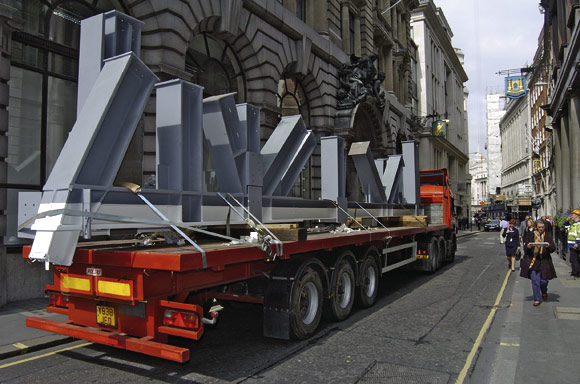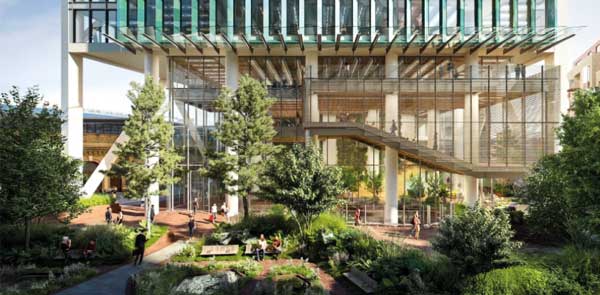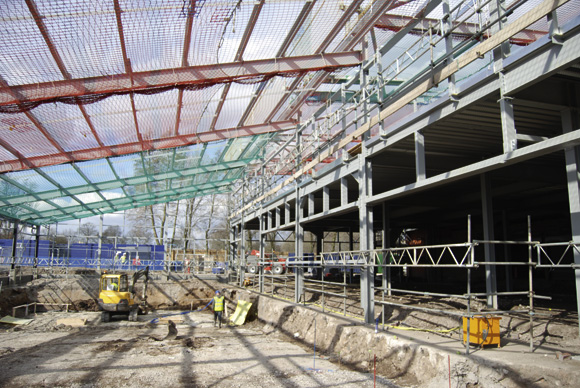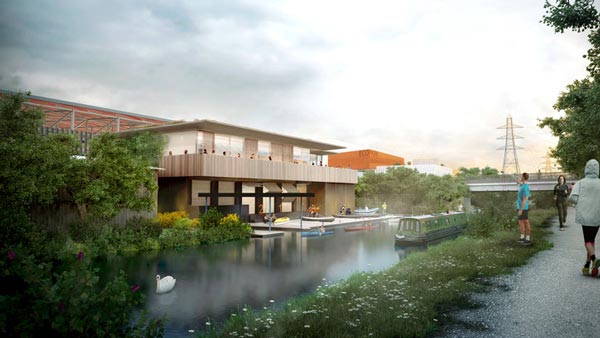Projects and Features
Sustainable steel construction: the facts

The manufacture of structural sections used in the construction of the new OCS stand at the Brit Oval cricket ground utilised steel recycled from an old steel mill at Teesside. A brochure describing the recycling of the steel mill is available from www.corusconstruction.com
Sustainability and steel construction go together more intimately than many might realise. Martin Cooper outlines the sustainability case for steel in the age of global warming and increasing environmental concern.
Minimal waste with recycling
Recent legislation to protect the environment and reduce waste, such as the landfill tax, mean that landfilling of building waste is no longer acceptable. Instead, construction and demolition waste is increasingly thought of as a resource that can be recycled into new products. The steel construction sector leads the way when it comes to recycling. Unlike most other common construction products, scrap steel has a significant economic value that ensures that it is recovered and either reused or recycled. Research has shown that 94% of all steel construction products are either reused or recycled when buildings are demolished, and this is likely to increase.
Steel has been recycled for centuries and most countries have efficient infrastructure in place to collect and process scrap. Globally some 400M tonnes of steel are recovered and recycled annually, representing about 40% of the total world production. Within a sustainability context, recycling steel eliminates waste and avoids the environmental impacts associated with producing new products from virgin sources. Unlike many other construction materials, steel has the advantage that it can be recycled, again and again, into new products with little or no change in its inherent properties.
Research carried out by the Steel Construction Institute (SCI) has estimated that there is around 100M tones of steel in buildings and infrastructure in the UK. This stock of steel is an important and valuable material resource that will be reclaimed and either reused or recycled in the future.
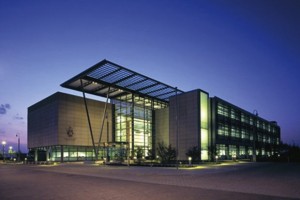
South Cambridgeshire’s district office in Cambourne features a number of elements that contribute to its energy efficiency
Fabric energy storage
improves efficiency
Fabric Energy Storage is the process whereby the structure of a building is used to absorb excess heat during the day. This heat is then purged at cooler times. Used well, the process can significantly reduce or eliminate energy requirements for cooling. Studies have shown that using fabric energy storage can decrease daytime peak internal temperatures by 3-5°.
Because of the physical limitations on the amount of heat which can be absorbed by the building structure however, it is not necessary or practical to design buildings with large mass to take advantage of the phenomenon. Research carried out at Oxford Brooks University has shown that the capacity is maximised if the floor is greater than 100mm thick.
A recent example of the use of fabric thermal storage to improve energy efficiency has been demonstrated in the South Cambridgeshire district council building in Cambourne.
The structure is a four-storey steel-framed building with exposed hollowcore pre-cast concrete planks. In addition to open plan offices, the council accommodation also includes a Council chamber, meeting rooms, library and staff restaurant.
The plan form with a central street allows the offices to be naturally ventilated. This stack effect of the street causes the rising hot air to draw in fresh air across the working areas. Hot air is expelled in summer or mechanically extracted with heat recovery in the winter.
Offsite construction aids safety and speed
One of the main advantages of constructional steelwork is offsite manufacture, which is more efficient, faster and safer than traditional site construction. Offsite manufacture was encouraged by Sir Michael Latham in the Latham Report and has been a feature of Rethinking Construction.
The benefits include enhanced quality control, dimensional accuracy, reduced construction time on site and overall programme savings. Environmentally, offsite construction generates less waste and also creates less noise and disruption for local residents. There are also social benefits connected with offsite construction, as a permanent and stable factory workforce will benefit and contribute to the local community. All steel construction products rely on offsite manufacture, from standard structural sections to fully fitted-out steel modules, all of which are made offsite and delivered to site pre-engineered and quality assured.
Because the steel sector uses just-in-time production and deliveries, offsite manufacture means site logistics are improved, which leads to better safety and less risk of damage to goods stored on site. Fewer materials and products stored on site eases site congestion and can speed up the entire construction process, particularly on congested urban sites.
Adaptability and reuse of steel
To be more sustainable, it is important that buildings are designed to accommodate future changes. By doing so, they will last longer and greater value will be extracted from the resources invested. It is estimated that UK businesses currently spend more than £2,000M per year on moving people or departments in response to organisational change in commercial buildings.
One solution to reduce this often unnecessary cost is to provide a column-free, uninterrupted floor which gives users flexibility to reconfigure internal areas. This can be achieved most economically by using steel structures to create the required long spans.
Another solution can be to enlarge a building, which is relatively simple with a steel framed structure when compared to a concrete structure. Difficulty in adapting buildings to change often leads to their premature redundancy, subsequent demolition and the need to dispose of unwanted demolished materials.









